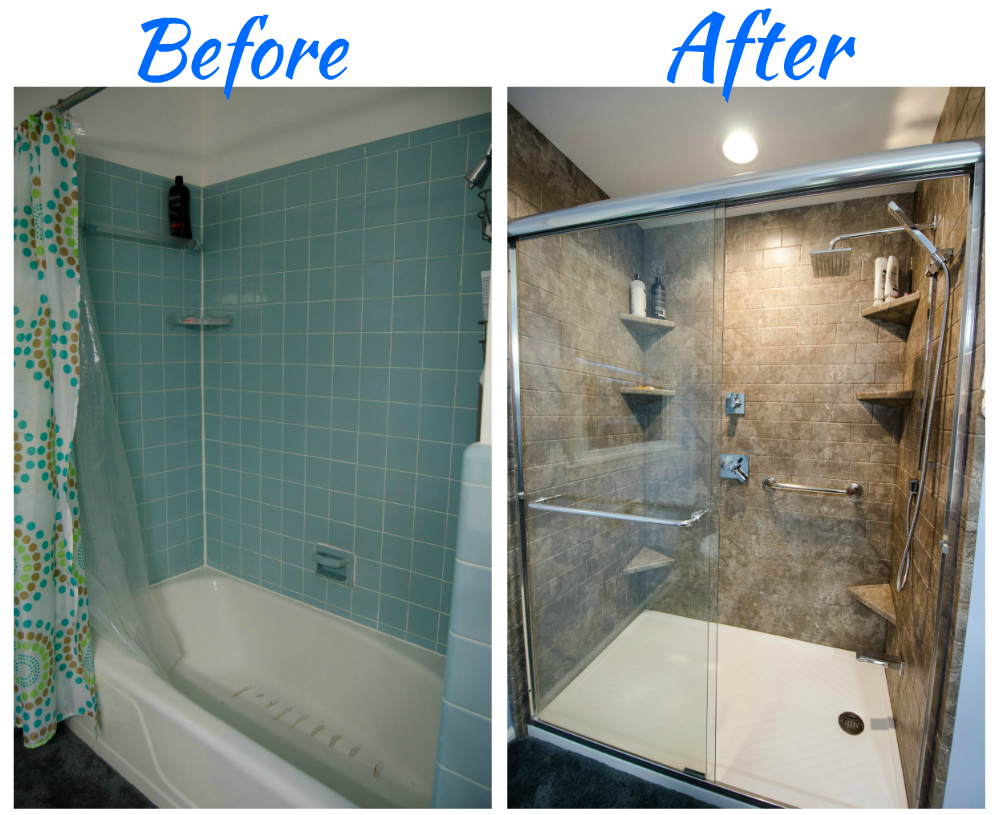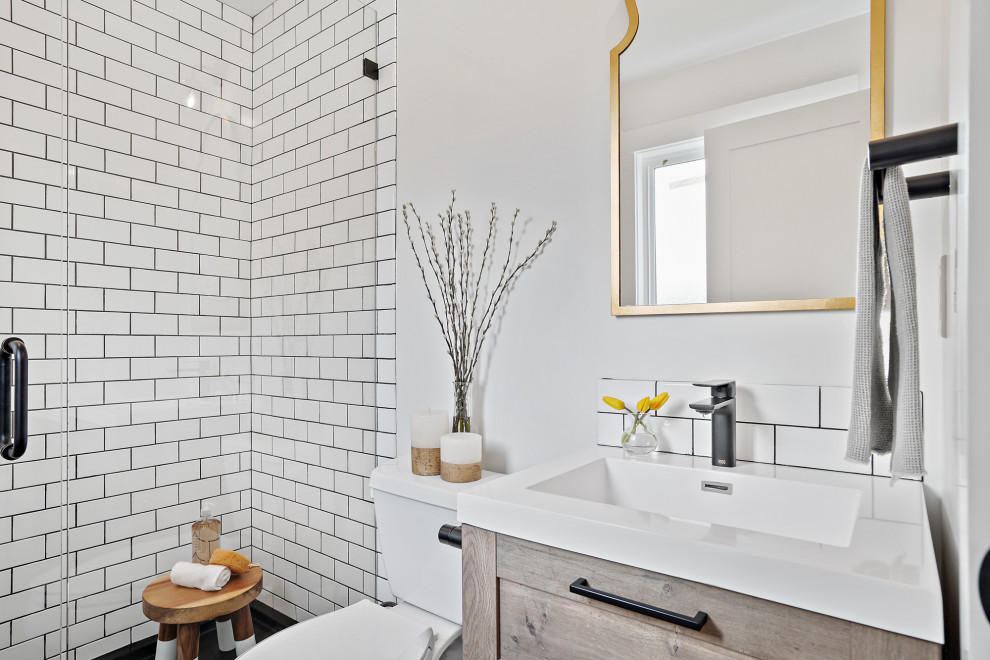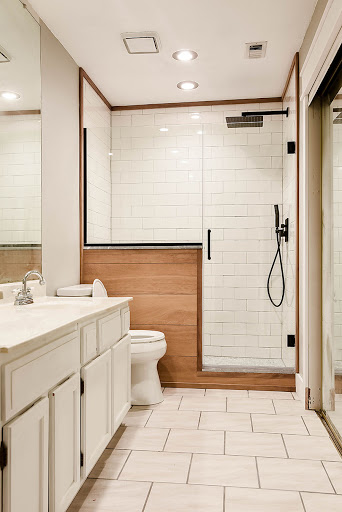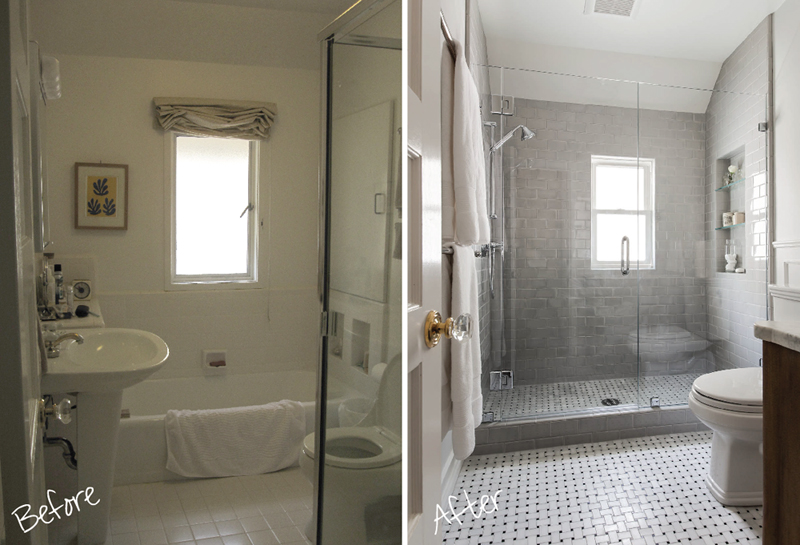
When you walk into your bathroom, do you feel like you are walking into the 1970s? Are you tired of trying to scrub the years of grime off of your grout? When was the last time you even took a soak in that bathtub?
It may be time to upgrade your bathroom and give it a fresh new look! Convert that ugly, outdated tub into a gorgeous new shower. Bathtub to shower conversions are popular in many households. Whether you’re looking for a safer alternative for climbing over a tall bathtub wall or simply want your bathroom to look more sophisticated, you can work with your contractor to get the remodel your want.
Here are some things to consider when thinking about a tub to shower conversion.
Kit or custom?
When installing your new shower, you have some options -- a shower kit or a custom tile shower.
If your old tub is in an alcove, you can remove and be left with a space that’s big enough for a shower. With minor modifications, your water supply and drain lines will already be in place, which will save you money on plumbing costs. Then it’s time to decide on a shower stall or a custom tile shower:
- Shower Stall Kit: These low-cost options are made to fit into corners and old bathtub alcoves. They’re typically made of acrylic or fiberglass and include pre-fab sides, a floor pan with curbs and a drain hole and a hinged glass door. These cost $200 to $2,000 depending on how many design elements you want. You can include extras such as built-in seats and shelving for bath products.
- Custom Tile Shower: Looking for something more luxurious and high-end? Consider a custom tile shower. These usually run about $1,000 to $3,500 depending on the type of tiles and fixtures you choose, as well as the labor costs involved. You will probably have to add another $500 to $1,00 for tear out, new plumping, fixtures and any custom carpentry needed. While a custom tile shower may be more expensive, you will end up with a unique, luxe shower.
Choose the right size
According to most building code, the floor of a shower stall should be at least 30”x30”. However, the National Kitchen and Bath Association recommends a 36”x36” wide stall. If you’re going to build a shower that big, you’ll probably have to modify your existing tub alcove.
Some other tips include:
- The distance from the side of the toilet to the shower stall should be between 15 and 18 inches.
- The distance from the front of the toilet to the shower wall could be between 21 and 30 inches.
- The finished ceiling height should be at least 80 inches
- When the shower door swings open, it should clear all obstructions, especially the toilet and vanity. Installing sliding glass doors or using shower curtains can usually solve door swing problems in bathrooms with a tight fit.
Play it safe around windows
If your bath is under a window, this may complicate things. But! A shower is not impossible. You just want to make sure you do it the right way.
The fact of the matter is you really should avoid having a window in your shower. Why? There are too many opportunities for water to seep into your walls through the window casing, causing major home damage and mold.
So play it safe. Install your shower where there is no window. Or, close up the window.
Focus on the shower floor
You may not even think twice about the floor of your shower, but you should. It’s crucial!
The floor of your shower (also called a shower pan) says a lot about the style and cost of your tub to shower remodel. You can choose one of two basic types of shower pans:
- Curbless: These are great for people with mobility issues, or if you just want a sleek design. With a barrier-free shower, the drainage slope of the floor is built below the level of the surrounding flooring surface, so the water pours down the floor and into the drain.
- Shower pans with curbs: These form a complete enclosure to contain water and channel it to a drain. These are usually easier and cheaper to install than the barrier-free shower floors.
Don’t get rid of your only tub!
Whether or not you plan on selling your home any time soon, any real estate agent will tell you -- homes with a tub sell quicker. Also, remember that it is easier to bathe small children in a bathtub, rather than a shower. These are some things you may want to keep in mind when converting a tub to a shower. If it’s your only bathtub, you may want to think of another way to update your bathroom with keeping the tub.
How much does a tub to shower conversion cost in Los Angeles?
That sophisticated shower doesn’t have to break the bank. The cost of a tub to shower conversion will run you between $2,500 to $8,000. Of course, there are reasons for the range in price. It depends upon the materials you choose, whether you choose a kit or a custom design. Also, if there are plumbing issues, that will raise the price of your tub to shower conversion.
Some other considerations that will factor into the price of your tub to shower conversion include:
- The condition of your existing pipes. You may need to replace them.
- Any mold, mildew or rot in the framing and subfloor will have to be repaired.
- Upgrading your shower valve to a single-handle, pressure-balancing valve that controls temperature and volume.
Before deciding on your tub to shower conversion, set a budget for yourself. Then, work with your contractor to design a shower that remains within that budget. That way you’ll not only be satisfied with the result, but your pocketbook will be happy, too!
Looking for a free estimate for your project? Call Los Angeles Bathroom Remodel today at (323) 402-6381.



